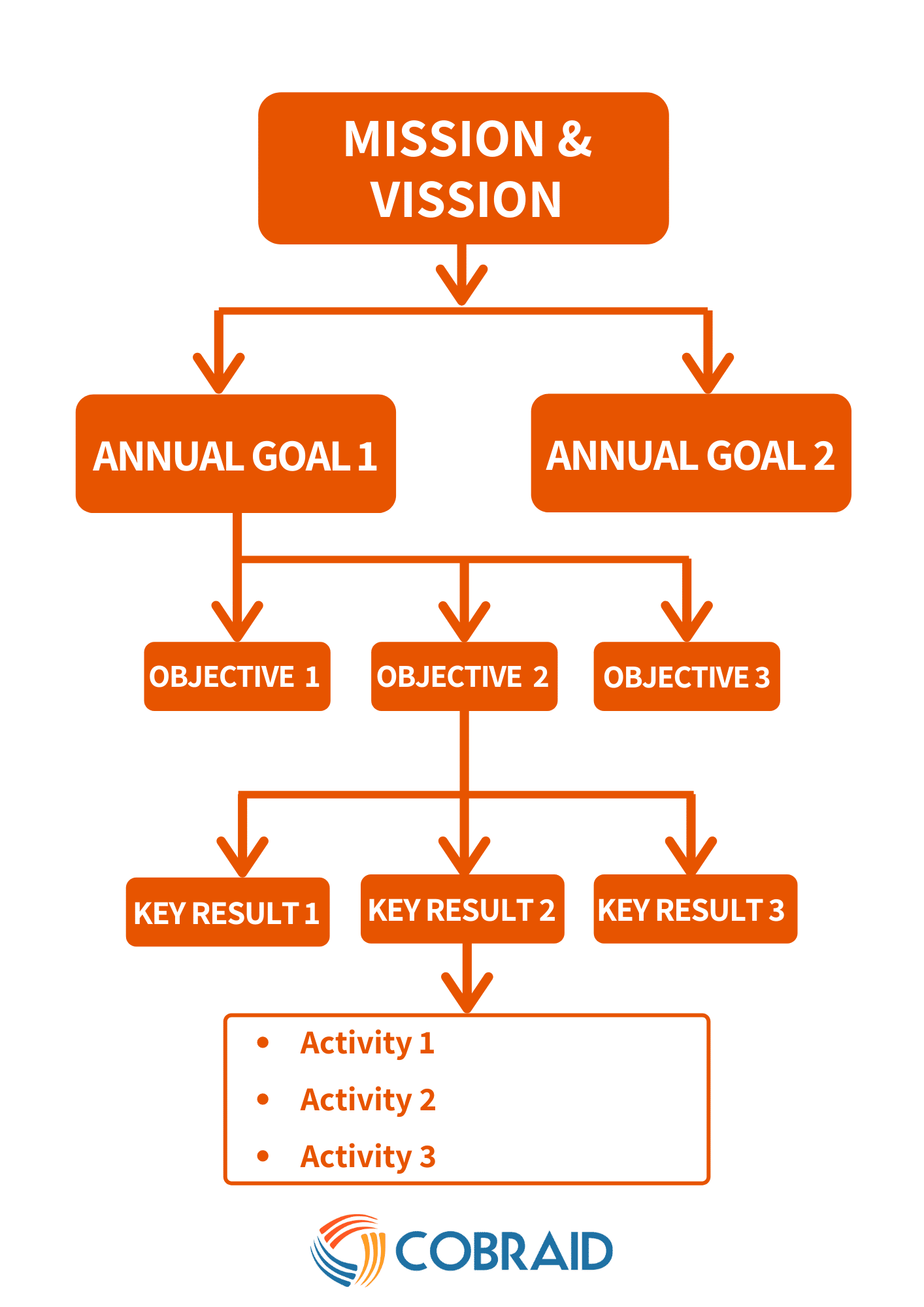We often discuss the importance of goals and KPIs. Most companies out there have different ways of adapting such and using them. Yet, goals and KPIs are not the only way of measuring your road to success. So, let’s learn more about another way: OKRs.
What are OKRs?
The abbreviation OKR stands for Objectives and Key Results (OKR). Much like goals and KPIs, it is also a management strategy for goal setting in organizations. Their aim is to help employees focus on their company’s goals and reflect on them periodically. In other words, to think big and aim higher.However, there is something more to OKR’s. OKR is a framework that aims to aid leaders bring their team to success.Companies using this method often divide OKRs into three categories: company, team and individual OKR. In contrast to goals, which are often not shared between teams, OKRs are meant to be public and clear to everyone in the company. The intent is to encourage transparency and align the individual with the organization.The OKR method is adopted by some of the most successful companies in the world. That includes Google, Intel, LinkedIn, Adobe, Amazon, Asana, Dell, Facebook, and many, many others.
How do OKRs work?
OKRs generally consist of two elements: an objective and various key results. A company can have many objectives and each of them can include multiple complimentary key results.Objectives
In this framework, the objectives take the role of goals. They represent the destination you want to reach. Objectives need to be both clear in what they aim to achieve, but also inspiring, so they can pull the team towards action.Objectives sometimes look too big, scary and outrageous. However, they challenge the team to not only reach their goals but surpass them and aim even higher.Key Results
The key results are where you go more into the details. Simply put, the objectives are the goals and the key results are the SMART milestones you reach along the way.As OKRs are usually set for a specific time – three, six or twelve months and include only the most essential achievement in this period, this makes them very specific. Moreover, as their number is limited, it brings to the surface only a handful of actions, which will make a real difference in your company’s results.Action is the keyword to keep in mind when choosing key results. Thus, it is advised that they start with a verb: launch, create, acquire, develop, monitor, etc.In order to optimize them further, it is a good idea to make them measurable or graded by a scale or a number. This way, the process of tracking them will be easier.An example of a company OKR may look like this:
How to set OKR goals?
The process of setting OKRs should start with a simple question: What is most important for the next three (or more) months?This is where OKR planning begins. Establishing the objectives for the OKR cycle and the way towards it (key results) is the key part when using this framework. This is the time where all departments, teams, and activities need to align and move towards the outcome with great precision.When the plan is defined and all employees adapt their daily and weekly tasks accordingly, the tracking and reflection phase begins. Employees need to conduct weekly meetings where they report on the progress and reflect on effectivity.If any challenges occur, the plan needs to adapt accordingly.After the OKR cycle has ended, a re-evaluation occurs. In this final phase, all aspects are considered and used to compose a new cycle with new objectives.
What are the benefits of using OKRs?
As mentioned above, many companies have experienced great success using the framework of OKRs. Yet, do we know what the benefits of using it actually are?Focus
Objectives should not crowd your space. A company can have multiple objectives, but they should never be more than seven. The same goes for key results – the fewer, the better. Also, they should all be clear and short.This may sound like a limitation, but it has proven to increase the focus of employees. Much like setting goals, understanding the aim and the direction helps companies refine their actions and stop wasting time and effort where it is not needed.Team Work
When OKRs are set and everyone have planned their tasks accordingly, another benefit of using the framework appears. For all to run smoothly and efficiently – all team members need to coordinate their work for successful completion. This transparency brings employees together and helps to a good rhythm at the workplace.Tracking
An essential part of the OKR framework is tracking which it is done in a very specific manner. While tracking of KPIs depends on their type, OKRs require frequent and common outcome reviews.Weekly meetings and discussions of the process are advice for success. Moreover, reflection on the outcome is essential. Have you set the right reference points in order to reach the objective? Are you moving closer towards it? If yes, what helped you? If not, what are you doing wrong?This reflection can further increase the efficiency of your team work and even help locate existing problems in the workflow.Growth
OKRs are meant to encourage teams and companies outgrow themselves. To show them that even though they have achieved something, they can do even more. This is the exact reason why the switch to this method can bring companies rapid growth.Moreover, OKRs can help motivate employees and push them out of their monotone daily tasks. Being part of the team and the common push forward will help them align with the company goals and to adapt them as their own.



